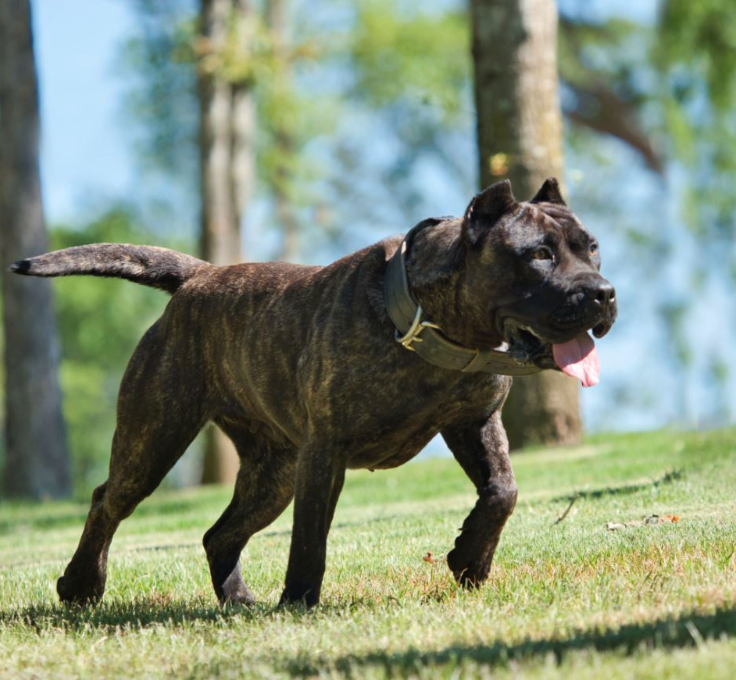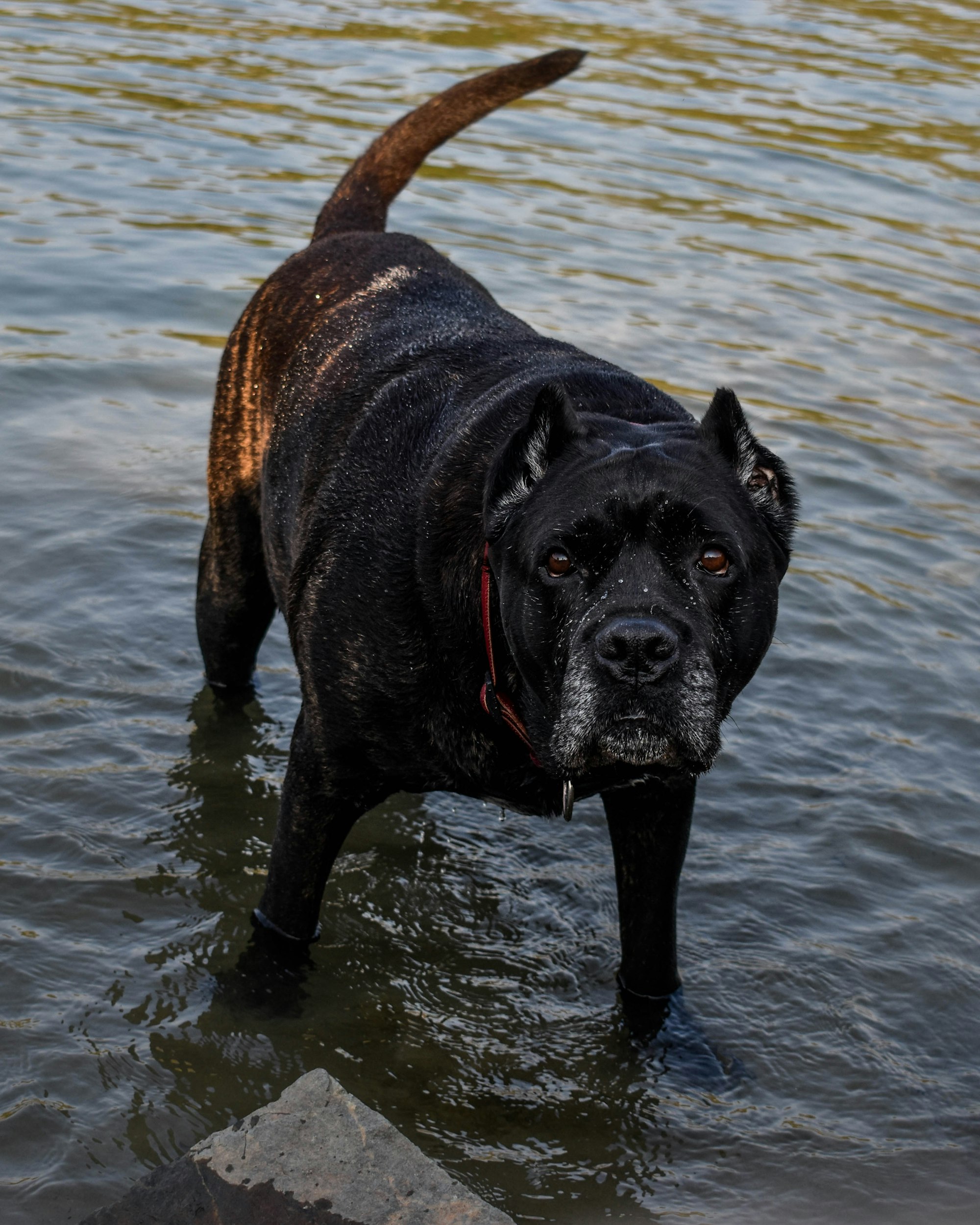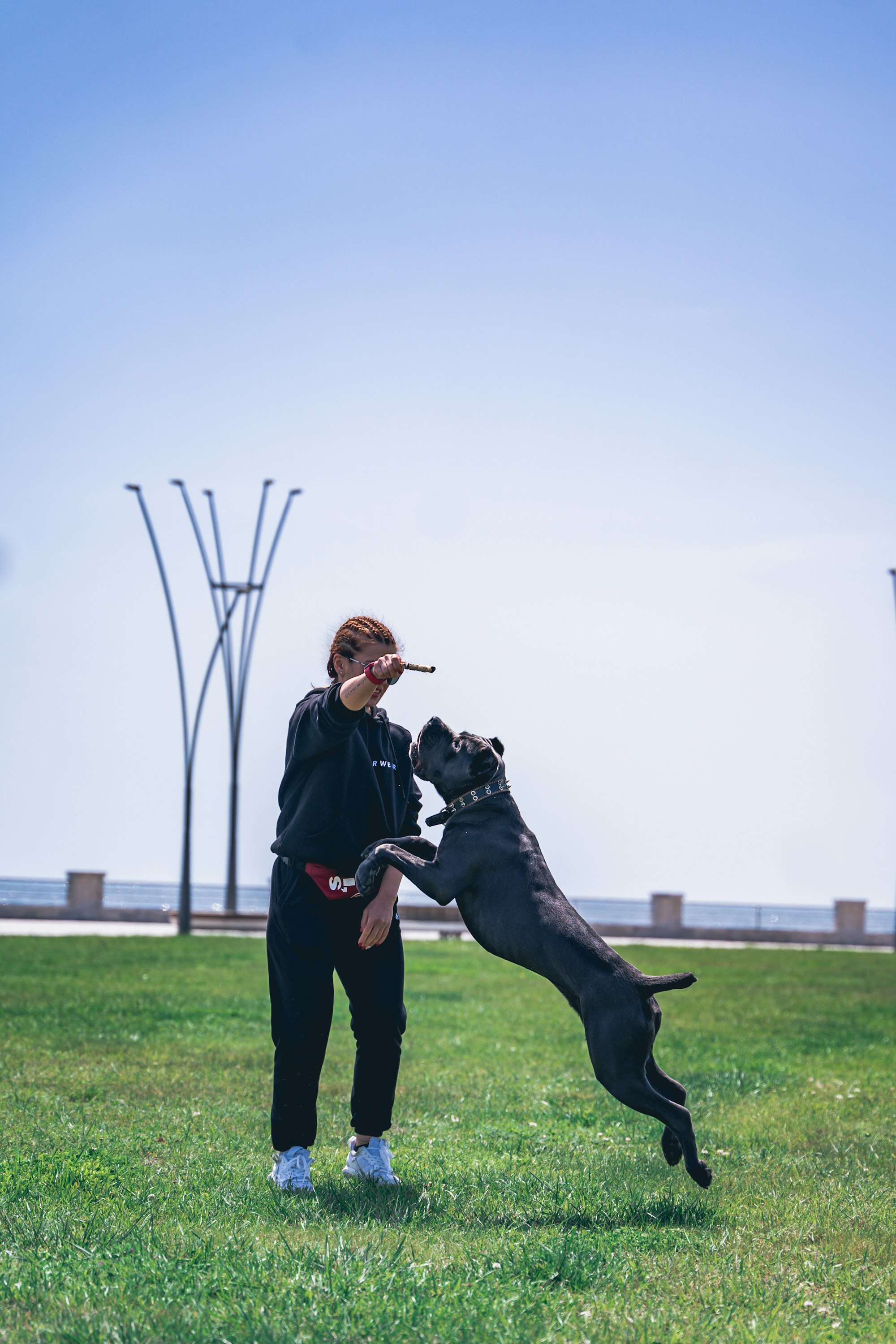Presa Canarios and Cane Corsos are both big, loyal dogs that are great for protecting your home. The two are similar in appearance and are sometimes confused, but there are distinct differences between the Presa Canario and Cane Corso dog breeds in physical characteristics and temperament.
Are you considering getting one of these majestic dogs? It’s vital to understand the differences first. While both are great dogs, one breed is more challenging than the other to train and maintain. You have to know what you’re getting yourself into.
Let’s take a closer look!
Stay Safe and Connected: The Fi Dog Collar for Your Loyal Guardian
For a reliable and innovative solution to keep your Presa Canario or Cane Corso safe, look no further than the . This cutting-edge GPS tracking collar helps you monitor your dog's location, activity levels, and sleep patterns, providing valuable insights to support your dog's health and well-being. Plus, you'll receive instant alerts if your adventurous companion makes a dash for freedom, making it the fastest way to bring them back home safely. Invest in peace of mind and give the Fi Dog Collar a try today!
What is a Presa Canario?
Perro de Presa Canario, or the Presa Canario as it's usually called, is a big dog. Males can stand up to 27 inches at the shoulder and weigh up to 140 pounds. Females are slightly smaller at 25 inches and 110 pounds.
Presa Canarios are Mossoler-type dogs that were originally bred in the Canary Islands to be working dogs. They were used for tasks such as herding and guarding livestock and protecting the homestead. They are an old breed and the oldest known record dates back to the 13th century.
They are powerful, muscular dogs with a short, thick coat that is usually fawn-colored or brindle. Their temperament tends to the aggressive side which makes them great for guarding livestock, but not so great for receiving visitors.
Unfortunately, their aggressive tendencies made them attractive to nasty folks who wanted to use them in dog fighting. The practice was so widespread that the breed almost died out in the 1940s. They made a comeback in the 1970s when aficionados of the breed started an intensive breeding program.
Presa Canarios have two distinctive features that make them stand out. The first is their black mask. They always have a thin black mask around their eyes complemented by black eye rims, noses, and lips.
The other is their cat-like feet. Their rounded, wide-set toes give them a more fluid stride that is unique in dogs. If you see one of these dogs gliding through the shadows, you might think a tiger is stalking you!

What Is a Cane Corso?
The Cane Corso dog is smaller overall than the Presa Canario, but still a big dog and can sometimes be slightly taller. Males can stand up to 28 inches tall and weigh up to 120 pounds. Females reach about 24 inches and 90 pounds.
Not surprisingly, Cane Corsos are part of the Mastiff family. The origins of the Cane Corso dog trace back to the southern part of Italy, where they were bred as versatile working dogs. The Cane Corso dog traces its roots back to Italy and was revered for its versatility as a working dog, being bred for tasks such as guarding, herding, and hunting. The Romans used their forefathers as war dogs. These fearless creatures charged into enemy lines carrying flaming buckets of oil to devastate their enemies.
After the age of Roman wars, Cane Corsos were still appreciated for their strength, but in different ways. They were bred as both guard and companion dogs and were used extensively for hunting wild boar. In fact, these highly intelligent dogs are quite adept at various jobs, including protecting livestock and estates as well as playing with children. Early socialization is crucial for Cane Corsos to ensure they develop proper behavior and temperament.
Though their history stretches back centuries, the breed was officially recognized in 1994. In the modern day, they are often chosen as police dogs for their intelligence and intimidating appearance, but families love them too. According to the American Kennel Club, they are the 32nd most popular dog in America!
Cane Corsos have big heads that resemble their Mastiff cousins, complete with big jowls and voluminous lips. Be prepared for lots of slobber!

Appearance
Both breeds are related to Mastiffs and thus they look very similar, though they have a few distinct differences.
Overall, Presa Canarios are the larger of the two breeds. As muscular dogs, they tend to weigh more than Cane Corsos, with males weighing up to 140 pounds and standing up to 27 inches at the shoulder.
Cane Corsos can sometimes be taller, standing up to 28 inches. Though they are still muscular, they are much slimmer than the Presas. Big males will generally weigh up to 120 pounds.
Both have short hair and don’t shed too much — always a plus! However, the Cane Corso’s coat is denser and a little bit rougher than the Presa’s. Cane Corsos tend to be black or fawn-colored while Presa Canarios come in different shades of fawn, often with white patches on their muzzle, paws, or chest. Both dogs may be brindle-colored.
Both breeds have large ears that naturally droop down. However, the traditional look for both breeds is to have their ears docked. This was to protect them from injury when hunting or protecting the flocks from wild animals. It’s also common to dock a Cane Corso’s tail.

Temperament
Presa Canarios are known for being calm, loyal, and protective. However, they are quite independent and can be aloof with strangers. They are extremely headstrong and while they can be trained, their owner must be experienced. These keenly smart dogs will push their boundaries constantly and exploit any weakness. Training and socialization are essential for both breeds, with Cane Corso training requiring firm yet positive reinforcement-based methods.
Presa Canarios will naturally take on a protective role. They are very affectionate with their family but suspicious of strangers. It is not advised to bring an adult Presa Canario into a home with young children or other pets. However, if you socialize him as a puppy, he will accept them as his family and love them fiercely. Early socialization is vital for both breeds to ensure they are well-adjusted and comfortable around other animals and people.
Cane Corsos, on the other hand, are known for being more outgoing and friendly. Though still suspicious of strangers, they will more readily accept visitors as long as their master says it’s okay.
In personality, Cane Corsos are great with small children, especially if socialized as puppies. However, their pure size and enthusiasm can sometimes lead to accidents so small children should be supervised when playing with these pups.
In short, both breeds can make great family pets if they are well-trained and socialized, though the Presa Canario will make this a more challenging feat.

Health
Presa Canarios and Cane Corso dogs are both large breeds with robust health. However, they are more susceptible to certain health conditions than smaller dogs.
Both are prone to obesity, though regular exercise will take care of that. And both can be prone to hip dysplasia, elbow dysplasia, and eye problems.
Presa Canarios can sometimes struggle with epilepsy, hypothyroidism, and seasonal or food allergies.
Cane Corsos may contract Wobbler’s syndrome, demodectic mange, cruciate ligament rupture, and may struggle with bloat.
That being said, both breeds can have a long and healthy life if they are well-cared for. The average lifespan for both breeds is over 10 years.
Exercise
Presa Canarios need a lot of exercise — they were originally bred to work all day, so they have a lot of energy. They are best suited to life in the country where they have space to run. Otherwise, they need to be taken on at least one-mile walks/jogs 2-3 times a day.
Cane Corsos are slightly less energetic, but they still need plenty of exercise. Again, they are more suited to homes with lots of space and need daily walks of over a mile.
If you don't give either of these breeds enough exercise, they can become destructive.
The Best Dog Breeds Choice for Your Family
Either of these dogs will make a fantastic, loyal companion, but Presa Canario dogs may be more challenging to train and maintain. Because of their differences, one breed may be more suited to your family than the other.
It all depends on what you’re looking for in a dog. If you want a big dog who will protect your family, the Presa Canario is a great option. However, you need to be prepared for the unique challenges of training a strong-willed animal that can weigh more than some human adults.
In return, though, you will earn the love and respect of a magnificent animal. The bond you can share with one of these majestic dogs goes deep beyond words.
If you love the appearance of the Presa Canario, but don’t quite feel up to the training challengers, the Cane Corso may be the better choice. Don’t misunderstand, you’ll still need a strong hand with these gentle giants, but they are somewhat more mild-mannered and eager to please.
Visit the for more helpful articles about pet-parenting tips.
Would you like to learn more about TryFi.com? The Fi Dog Collar is a GPS tracking collar that not only tracks your dog’s location, activity level, and sleep pattern, but also alerts you if your dog escapes. If your dog escapes, this is the fastest way to find him. Give the Fi Dog Collar a try today!






